The Fuji X100:
Yes, this is my Fuji X100 user review. This is the camera that I have grown to love. Admittedly, while some may think that this review came a bit late (the X100 came out over a year ago), I respectfully disagree. Why? First off, many people were hoping that Leica would announce their EVIL camera or at least do some more revolutionary upgrades as oppose to evolutionary upgrades with the X2. While this is no dig to Leica, the fact is, some were hoping that Leica would make some more worthwhile upgrades to the X2. As a result, many prospective buyers that were waiting for Leica’s May announcement might be considering the X100 as even more of a real alternative right now.
Second, the new firmware that was recently released has really sped things up for the X100. In all honestly, the Fuji X100 feels like a completely new camera to me! Like many others, I was pretty excited when Fuji officially announced that they were making the X100. Here was a camera that was small, operated like a rangefinder (even though it is not a rangefinder), and had the potential to offer amazing image quality. All this for a very reasonable $1200 ($999 now at Amazon). I thought to myself, “what a great camera for when I just don’t want to bring my M9 along with me”. I’m pretty sure many people felt the same as I did.
So, like many others, I pre-ordered the Fuji X100, and was lucky enough to get one of the very first samples here in the U.S. My first thoughts? Well, my first thoughts were nice packaging, beautiful build quality, and good image quality. Perfect camera, right? Time to sell the Leica M9, right? Well, not exactly. Not everything was as perfect as it seemed. While the X100 excelled in so many areas, there were some areas where I just found the X100 to be plain out annoying. X100 owners please don’t get upset :). This is a user review, and I’m just stating how I felt. The camera just didn’t feel “snappy” enough for me. When I needed to wake the camera from sleep, it sometimes felt like I was waking up a teenager for school. The AF was slow and it misfocused frequently. Overall, it just felt a little buggy to me.
When Fuji announced that there was new firmware that would fix many of these problems, I honestly didn’t completely believe it. Then I started to hear good things coming from various people who did upgrade, and so I decided to put the firmware upgrade on my “to do” list. When I did get around to upgrading my X100, I was very, VERY pleasantly surprised. The camera overall is just so much faster. This in my opinion, is how the camera should have been on it’s release. But hey, better late than never, right? 🙂 The Fuji X100 is now a complete joy to use even with my purchase of the X-Pro1 (You can check out my X-Pro1 review if you’re interested). In fact, I was originally going to sell the X100 to make up some of the money that I spent on the X-Pro1 system but I have now decided that I will keep it. Why keep the X100 if I already have the current X Series flagship? Well, there are a number of reasons, which I will explain if you read further :).
But before I go on, I just want to make clear that this won’t be one my traditional reviews where I go over every nook and cranny. I’m not going to do this because at this point, there are several very good reviews out all over the web on the Fuji X100. I will touch on the basics but also bring up some good points on why the X100 is still an awesome camera even when compared to today’s competition…in fact even more awesome after the firmware upgrade.
Fuji X100 Build Quality:
Well, you probably read this on other sites but when discussing the Fuji X100, its fantastic build quality should definitely be mentioned. I would even go as far, and say that the X100 is slightly better built than the X-Pro1. The X100 feels like a solid block of metal, and it should, considering the upper control deck and bottom surface of the camera has been cast from magnesium-alloy. All of the knobs have a very nice, secure, and tight feeling to them, although I’m not a big fan of the exposure compensation dial. I always have to double check it to make sure I didn’t move it by accident. But besides that, everything is great with the X100. When buying some of these mirrorless cameras, sometimes I feel like I’m not buying anything special because many get upgraded over and over so fast. The X100 is different because it feels like Fuji took their time to build it, and it just feels special in my hands.
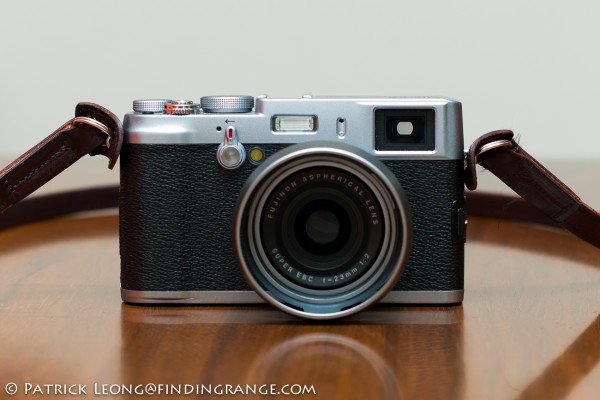
↑ The front of the Fuji X100.
So the build quality is decent but how does it handle? Well, in terms of handling, anyone who loves total control of the image making process will feel completely at home with the Fuji X100 because it has traditional exposure controls, such as a traditional shutter speed dial, and a traditional aperture ring on the lens. This camera screams photographer, and well, it makes sense because that’s what the X100 is designed for: a photographer who wants a straightforward, no nonsense camera that produces great images. It’s lack of features is probably the main feature in itself.
While for the most part, the design of the camera is very good, there is something that I want to mention that irritates me a bit. The scroll wheel/menu is a bit sensitive, and a little too small. You have to really pay close attention to the scroll wheel when making adjustments. I don’t have particularly big fingers, and I’ve let other people play with my X100, and everyone says the same thing. I’m glad that the X-Pro1 does not have this problem, and I’m pretty sure Fuji will probably implement a scroll wheel that is similar to their X Series flagship in the future. But again, other than the scroll wheel, there is not much to complain about. Well…one thing that I do wish for: I wish Fuji included the lens hood with the X100 but for $1,200, I shouldn’t be complaining. Besides, I bought the third party version for cheap. It’s made by JCC, and you can check out my review of it.

↑ The back of the Fuji X100.
Overall, besides the one or two little things that I don’t like, the feeling I get when I pick up the X100 is, “I sincerely miss cameras like this”. It’s the reason why I’m willing to pay $7,000 for something like an M9. All metal construction, solid build, manual exposure controls, great image quality…this is how cameras used to be made, and I have nothing but praise, and respect for Fuji for continuing this camera manufacturing tradition. Anyone with an appreciation of how they use to build cameras will love the Fuji X100. The great thing about this is that you can buy the X100 for the very reasonable price of $1,200. It’s easy to see why the X100 has developed such a cult following.
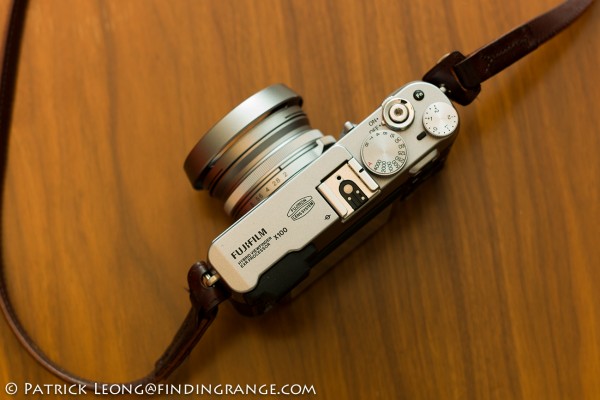
↑ Top view of the Fuji X100.
Fuji X100 Image Quality:
Not only is the build quality and handling good, image quality is excellent as well. With its APS-C sized sensor and Fujinon 23mm F2.0 Aspherical lens, you can bet that the Fuji X100 is going to be a killer in terms of image quality. The X100 is definitely up there with the best in terms of image quality, and I would argue that the X100’s image quality rivals many DSLR’s out there. That makes sense because the X100 has the same size sensor as many of todays DSLR’s. Contrast is great, colors (especially blues) are rendered beautifully, and dynamic range is good.

↑ Stuck in traffic on the way back to Bayridge from Queens.
The Fujinon 23mm F2.0 and the 12MP APS-C CMOS EXR sensor are a perfect match together as they should be since the X100 can not interchange lenses. For most, the 23mm F2.0 is the perfect lens to have if there is only a one lens choice. The 23mm becomes a 35mm with the crop sensor, and F2.0 is plenty fast for most situations. It’s also plenty sharp, and renders images very nicely, although it can be slightly soft at times when shot wide open. I’m a 50mm guy, so sometimes I wished that they made a 50mm version of the X100. But that’s not a complaint; that’s just a preference. Overall, especially for the asking price of $1,200, it’s hard to find better.
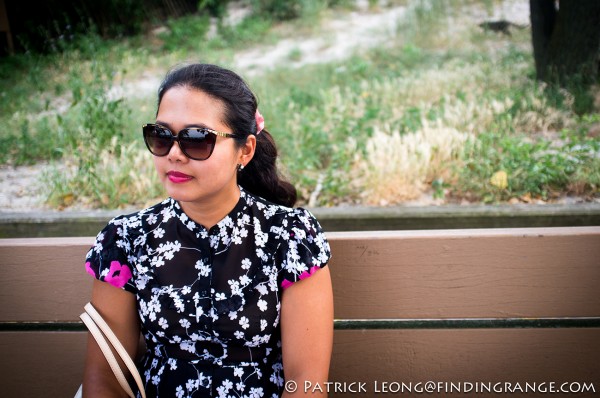
↑ The X100 produces beautifully colorful yet refreshingly clear images with very little need for intense post processing.
Let me expand on that last sentence real quick. Here is a camera that is compact, very well built, great lens, and a big sensor for the price of $1,200. I don’t know how Fuji does it. After the firmware update, I find myself using this camera more and more because it’s just so easy to carry around all day. Yeah, you can buy something smaller and cheaper but I don’t think with the same combination of image quality, build quality, and manual features. The Fuji X100 is like a Leica CL. The X100 produces awesome images but it’s so compact, so easy to live with, and offers total control to the photographer…I can’t understand why no other manufacturer hasn’t thought of this concept yet. BTW, the X100 looks pretty good too :).
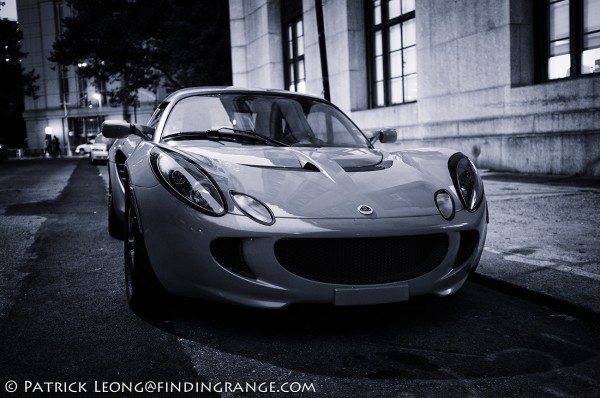
↑ This was shot wide open at 1250 ISO, and converted to black and white using Nik Software Silver Efex Pro 2.
Fuji X100 High ISO Capability:
As I said, image quality is great but it doesn’t stop at higher ISO’s. In fact, high ISO on the Fuji X100 is excellent, and competes very well with some of the best APS-C sized sensor DSLR’s out there today. I shoot mainly from 200 to 1250 ISO but you can pretty much shoot at all ranges of ISO without any real problems. Below are sample images of the X100’s ISO capability.

↑ This is the image that I will be using.
↑ You can check the ISO of each 100% crop by looking at the lower left hand corner.
The Near Silent Shutter of the Fuji X100:
Why do I have a separate section for the sound of the shutter? Well, do you want a camera that produces excellent images but at the same time won’t ruin or disturb a scene? Look no further because the Fuji X100 has a shutter that is near silent. This is thanks to a leaf shutter design in the lens. There was one time I was in a diner with a friend, and she didn’t even know that I was taking her photos from across the table in a booth. She thought that I was just playing with the camera. the ambient noise wasn’t even that loud in the diner.

↑ You can get really close without anyone knowing that you are taking a photo because the shutter is so quiet.
Integrated Hybrid Viewfinder of the Fuji X100:
So far we have excellent build quality?: check. Manual controls?: check. Awesome image quality?: check. What is the Fuji X100 missing to make it a dream camera for the experienced photographer? For me (and I bet many others), a big bright viewfinder that actually isn’t an afterthought. Well, all I have to say is that Fuji should definitely be proud of themselves for making such a wonderful INTEGRATED viewfinder in the X100. I think a great viewfinder is what’s been sorely missing in many of today’s cameras. I don’t want to look at an LCD screen, and I don’t want to look through an attachment. I want a big, bright, and functional viewfinder that is integrated in the camera itself.

↑ Fuji camera are great with blues, and the X100 is no exception.
One look through the OVF, and anyone will see what I mean. The X100’s OVF is bright, clear, inviting, and uncluttered. It can also be customizable to a certain extent. You can tell that Fuji put a lot of thought into this, and the cool thing is that if you prefer an EVF, you can switch to one with a flick of a small lever in the front of the camera. SImple as that. Moreover, if you want, you can choose to use the eye sensor in the Fuji X100 so the camera can automatically switch from the LCD display to the OVF/EVF when you lift the camera to your face.
Fuji X100 Film Simulation Modes:
I shoot in RAW all the time but just like the X-Pro1, the X100 produces beautiful jpegs that anyone should be happy with. I find the auto white balance on the X100 pretty good so I can’t blame anyone who wants to just shoot in jpeg. If you do choose to shoot in jpeg mode, there are several film simulation modes built into the Fuji X100. My personal favorite for both the X-Pro1 and the X100 is Velvia mode because I used to LOVE shooting Velvia back when i shot primarily with film. Below are a bunch of images shot in all the different simulation modes.
↑ The type of film simulation used can be found in the lower left hand corner of each image.
Macro Mode With The Fuji X100:
The Fuji X100 does have macro mode, which does work pretty good, and it can focus as close as ten centimeters. But I wouldn’t consider it a completely real macro mode because you have a wide angle for a lens. But besides that, it is pretty useful at times even for close up portraits. If you choose to use the viewfinder instead of the LCD screen, the X100 will automatically switch to the EVF to help compensate for the extreme parallax in macro mode. But as Fuji says, you should probably stop down a bit when you are really close. I can see why because sometimes I experience a little softness in my image. Also, it would be nice if the camera could switch to macro mode automatically or at least make it a bit more accessible. Sometimes I just ruin the spontaneity of a scene because I have to click the already cumbersome scroll wheel area, and go through the menu in order to switch to macro mode. It may sound like I’m nitpicking but it has happened to me several times.
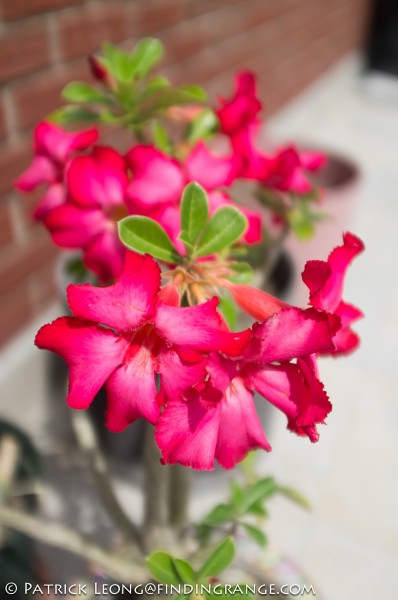 ↑ Here is an image shot at F2.0 in macro mode.
↑ Here is an image shot at F2.0 in macro mode.
Fuji X100 vs. Leica X2:
The big question for many is now that the Leica X2 is out, who will be the reigning king? Which is the camera to get? Well, I haven’t tried the X2 out yet but I have used the Leica X1 quite a few times. In terms of image quality, I personally prefer the X1 images over the X100, so I would imagine that the X2 images are only better. I really do prefer the X1 images over the X100’s, and I would be lying if I said otherwise. With that said, why would I buy an X100?

↑ This photo was converted to black and white using Nik Software Silver Efex Pro 2.
Well, the Fuji X100 has several great things going for it. First off, the lens is one stop faster, and it can use filters. Second, it actually feels like more of a “real” camera to me than something like an X1 or an X2. The X100 has rangefinder styled controls and feel, so I don’t feel like I’m just shooting with a really expensive point and shoot. Furthermore, the X100 has an integrated hybrid viewfinder that actually works really well. With the X2, you’ll have to buy an electronic viewfinder that attaches in the hotshoe, which to me is just not the same. Lastly, with the new firmware, the X100 feels like an old hot rod that was just recently restored but with a few added extras put into it :). General operations are just faster, and bug free. I said this before but it should be said again: the X100 definitely feels like a new camera.
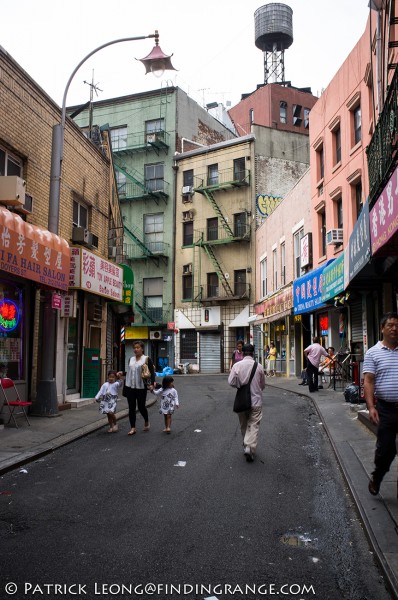
↑ One of the oldest streets in Chinatown taken at F11.
Think about this as well: A Leica X2 costs $2,000, and if you want the electronic viewfinder, you’ll have to add about $530 for the Leica one (as opposed to the Olympus one). That’s about $2530. The Fuji X100 with its integrated OVF and EVF costs $1,200. Now, if you want an additional focal length for your X100, you can purchase the WCL-X100 for about $350. That adds up to about $1,550 for the Fuji X100 WITH an additional 28mm focal length, and a built in hybrid viewfinder. Yeah image quality might be better on the Leica X2 but the X100 is no slouch either. Image quality is definitely good enough for me that I ended up buying an X100 because I just want the features of a rangefinder styled camera. Another thing to consider: the fact that the X100 can still compete with a newer model, especially since it was designed to compete with the X1, says a lot about the X100.

↑ This was taken by the water in Bayridge Brooklyn.
But the key thing to remember is that there really is no wrong choice here. This is not a Leica bashing post, especially since I absolutely love Leica cameras. It really comes down to your own preference. Both cameras are great, and each of them have their own individual strengths and weaknesses. If you did decide to buy a Leica X2, good for you. The truth is, I actually want an X2 as well. I really like what the X1 produced in terms of image quality, and I’m sure the X2 is only better (I really should get one in for review soon). I’m stating right here that I really do prefer the X1 images over the X100. It’s just for me, I really wanted a camera that had rangefinder styled features, and the X100 was it. Plus, image quality was pretty awesome as well :). I figured that if I really wanted a Leica…well…I have my M9 :).
Pro’s Vs. Con’s of the Fuji X100:
Here’s a short list of what I think the pro’s and con’s are of the Fuji X100.
Pro’s:
- Excellent build quality
- Rangefinder styled controls and feel.
- Small size.
- DSLR sized APS-C sensor
- Great image quality.
- Excellent high ISO capability.
- Great lens that’s fast, sharp, and produces beautiful colors.
- Near silent shutter
- Integrated hybrid viewfinder with an OVF that is especially excellent.
- Priced perfectly for what you get.
- New firmware has fixed many of the bugs that plague the X100 before making it feel like a new camera that is definitely faster and better than before.
- Autofocus is now much faster and more accurate.
- For what it’s priced, and designed for the X100 is near perfect.
Con’s:
- While the 23mm Fujinon lens is an excellent piece of glass, it can be slightly soft at times when shooting wide open.
- The exposure compensation knob is easily moved by accident.
- the menu scroll wheel is too sensitive and small making it easy to make mistakes when your adjusting inputs in the menu.
- When shooting in macro mode, sometimes you have to stop down a bit to prevent slight softness in the image.
Over a Year With The Fuji X100:
It’s been over a year since the Fuji X100 was released, and it has only gotten better and better. It took me a while to embrace the X100 but now that I have, I absolutely love it. With its new firmware, the X100 can still hold its own even in the face of its new competition. In my opinion, the X100 offers features that are truly unique for a camera in its class. When you first lay your hands on the X100, you get this sense that you are truly holding something different and special.

↑ I believe that this is a french bulldog. They are one of my favorite breeds.
Anyone who loves cameras of the past, are rangefinder fanatics (such as myself) or love being in total control of the image making moment will definitely be at home with the X100. Yes, maybe there is a new X200 on the horizon. Some people have suggested that the discounting of the X100 at various places, such as, Amazon and Adorama is a sign that the X200 will be announced. But I honestly can’t see how Fuji can make significant improvements on the X100. For what the X100 is designed for, it is near perfect. Think about it: where are you going to get a camera with a fast 35mm equivalent lens, full manual controls, knobs, and rangefinder styled features combined with killer image quality for $1,200 (As of now, $999 at Amazon!!!)? Now thanks to its firmware, it’s even got speed too :). Thinking about it in that way, one definitely can understand why the Fuji X100 has become a cult classic.
That’s it for my X100 review. Thanks for taking the time out to read it. Comments below are always welcomed! Take care and thanks for stopping by!
If you’re considering buying the Fuji X100, and my review helped you decide, please help support me by purchasing from one of the links below. Thank you for your support!
Both Amazon and Adorama have the Fuji X100 for $200 off the list price

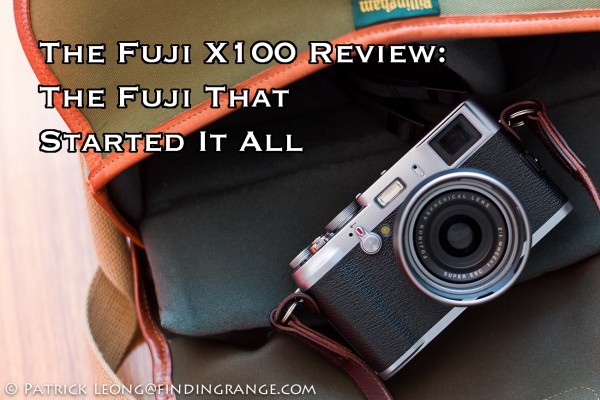


















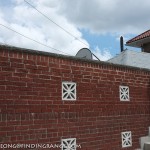
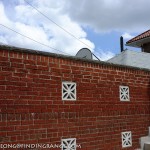
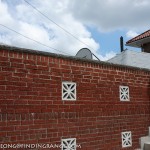

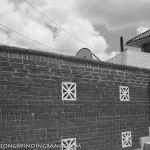
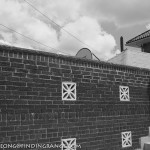

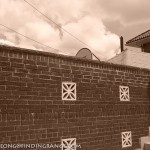
Almost bought the black edition 2 months after selling the original X100. It was on sale too for $1,200 with all the goodies (case, etc). I really miss this camera. But I think if I kept it the XPro1 will collect dust. Maybe the X200 when it comes out next year!
For a while, the Black Edition was going for a decent price. I was even tempted! Wow, you really love the X100, don’t you? 🙂 Maybe you really should buy another one lol. Yeah, the X200 has got to come out soon. It’s been two years already, hasn’t it?
Probably soon, or not depending on how much is still selling. I remember calling all local camera shop and they are all sold out. I ended up driving 2 hours to pick one up and I told myself finally I have something like a Leica haha!
The X100 definitely has a cult following. If they do come out with an X200 soon, it will probably be pretty cool since Fuji probably learned a lot from building the X-Pro1, and X-E1. Yeah, I remember when the X100 first came out. People were going crazy for it. I bought one right away as well. In many ways it really is like a Leica. Especially for that time, where else was anyone going to find a camera in that price range with all manual controls, metal construction, and awesome image quality? Even after 2 years, the X100 really is pretty awesome.
Great review, can you update it with the X100’s Firmware 2.01 ?? It will cool and can be a grate comparaison with the old firmware. 🙂
Hi Vincent,
Thanks for taking the time out to read it! Unfortunately, I don’t own the X100 anymore, so I won’t be able to do that comparison for you. I can tell you that the X100 is a much better camera thanks to the latest firmware. Thanks to the firmware updates, the X100 feels like a completely new camera compared to when the camera was first released. Thanks for stopping by!
All the best,
Patrick